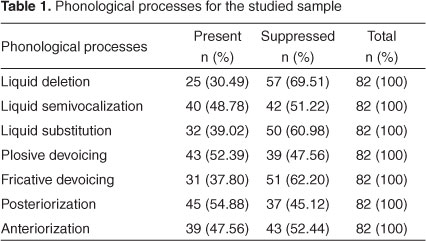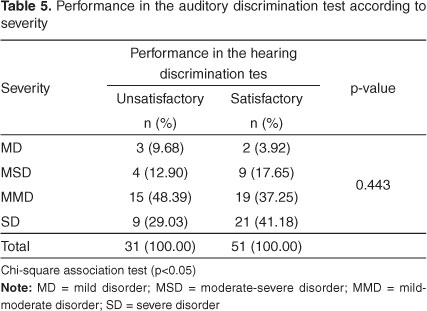PURPOSE: To determine the most frequent errors of children with phonological disorders in an auditory discrimination test, and to correlate their performance with age, gender and severity of phonological disorder. METHODS: The sample consisted of 82 children with phonological disorders, of both gender, with ages between 4 years and 7 years and 11 months. All subjects were submitted to the Phonological Assessment of Child (Avaliação Fonológica da Criança) in order to establish the severity of phonological disorder, and to the auditory discrimination test. Data were statistically analyzed. RESULTS: It was found that 38% of the subjects had poor results on the test, and the most frequent errors were: posteriorization, devoicing of stops, and semivocalization of liquid consonants. Moreover, it was observed that auditory discrimination difficulties were less frequent in older subjects, and more severe according to the severity of the phonological disorder. CONCLUSION: Great part of the children with phonological disorders has difficulties in auditory discrimination. However, these difficulties were less frequent in older subjects and more severe according to the severity of the disorder. Male subjects seem to have more difficulty in discriminating speech sounds.
Speech discrimination tests; Speech perception; Child language; Language development disorders; Speech





